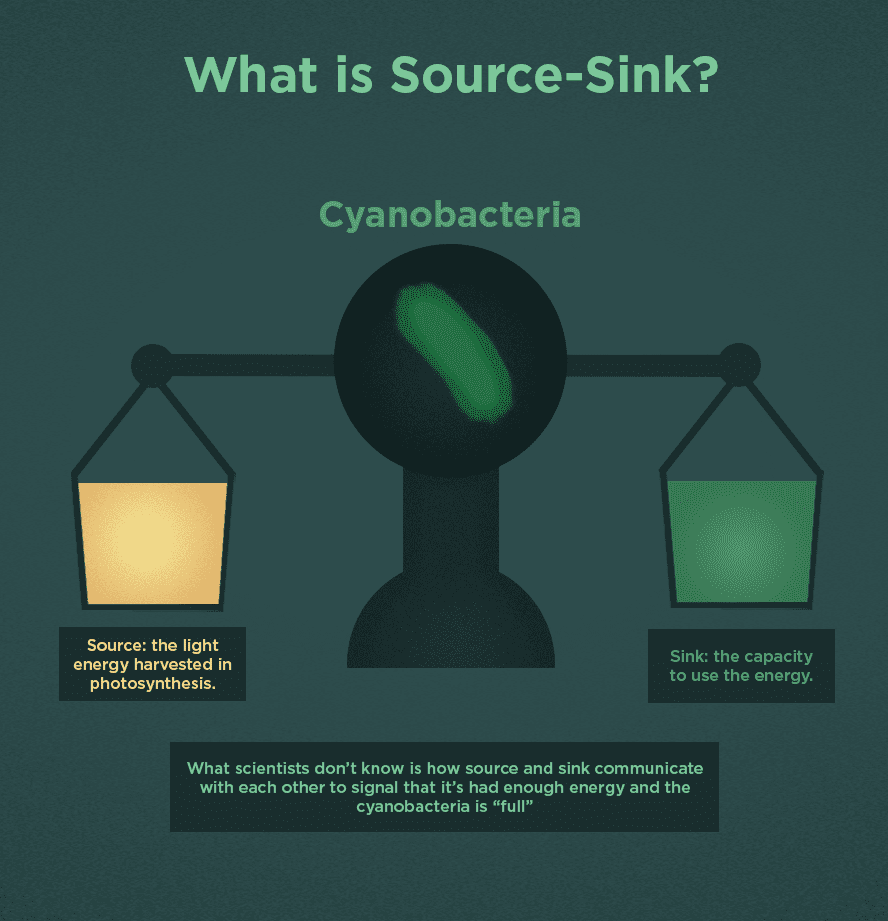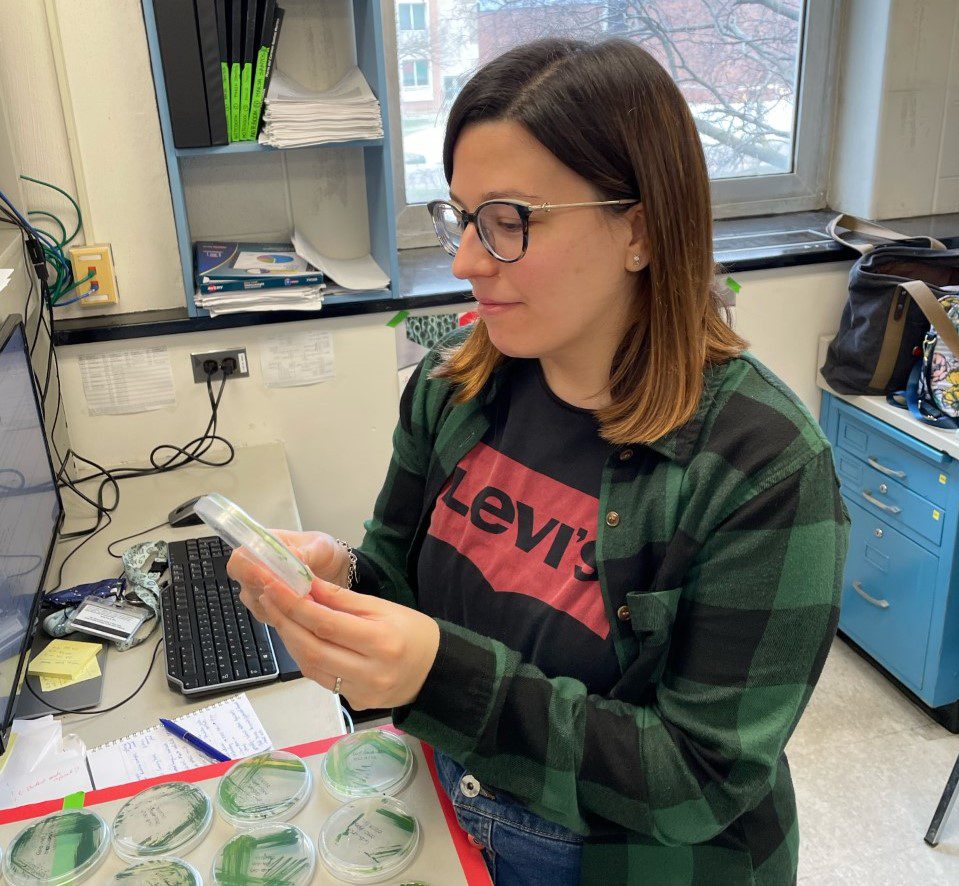Cyanobacteria are little green microorganisms that photosynthesize, like plants and algae do, but with stark differences in how they function.
“I prefer to say that they are tiny green bacteria that are able to perform photosynthesis as plants but within a really tiny compartment,” María Santos-Merino, a postdoctoral researcher in the Ducat lab at the Michigan State University-Department of Energy Plant Research Laboratory, or PRL.
Santos-Merino was the first author of a recent publication in Metabolic Engineering that looks at how cyanobacteria balance cellular energy between “source and sink,” which may have downstream applications in bioproduction.

During photosynthesis, an organism performs many steps when taking light energy and converting it to the fuel it needs to grow and survive. At the same time, the organism does not want to work to harvest more energy than it needs. So it needs to be able to signal itself from within to indicate that it has harvested enough energy.
Source-sink is the name given to a regulatory mechanism that balances the light energy harvested in photosynthesis — source — with the capacity to use said light energy — sink.
“We are trying to identify the communication between source and sink activities,” said Santos-Merino. “In other words, we are trying to identify how cyanobacteria are able to balance the activity of the source with its capacity to use this energy in the different sinks. We know that this process happens, but we did not know how it was regulated.”
The researchers started with a library of 44 two-component protein systems. Two component systems work like text messages. One component sends a message and the other receives and responds. This is how cyanobacteria normally communicate and respond to environmental and internal cues.
Taking the 44 two-component systems, the researchers created mutant cyanobacteria lacking one of each of these components. They then observed whether the communication between source and sink was disturbed, allowing them to determine which, if any, of these 44 two-component systems were involved in this signaling pathway.
The study identified four candidates of the 44 thought to be involved. Next steps for the lab include further characterizing what these individual candidates do at the molecular and metabolic level.
“The most interesting takeaway of this research was that it implies that the central network regulating energy balance in cyanobacteria may rest on a relatively few regulatory proteins,” said Daniel Ducat, associate professor at the PRL and in the Department of Biochemistry and Molecular Biology. He was the principal investigator on this study. “These proteins have largely not been implicated in energy balancing roles in the prior literature. In the long term, the practical application of this research is that if we learn how to dial in the metabolic balance of cyanobacteria, it could enable us to poise them for higher photosynthetic activity and efficiency.”

Santos-Merino has been working with cyanobacteria since she started her doctoral studies in 2012.
“I think that they are fascinating, underappreciated microorganisms that had very important ecological roles,” she said. “Every time that I discover something that is unknown, my curiosity increases, [motivating me] to get deeper in the significance of this finding. There are still a lot of unanswered questions on how certain metabolic processes take place in cyanobacteria and how they are regulated. Answering some of them — or at least trying to answer them — is what makes me want to continue working with these organisms.”
This story was published by College of Natural Science.
